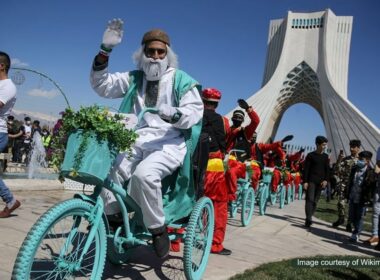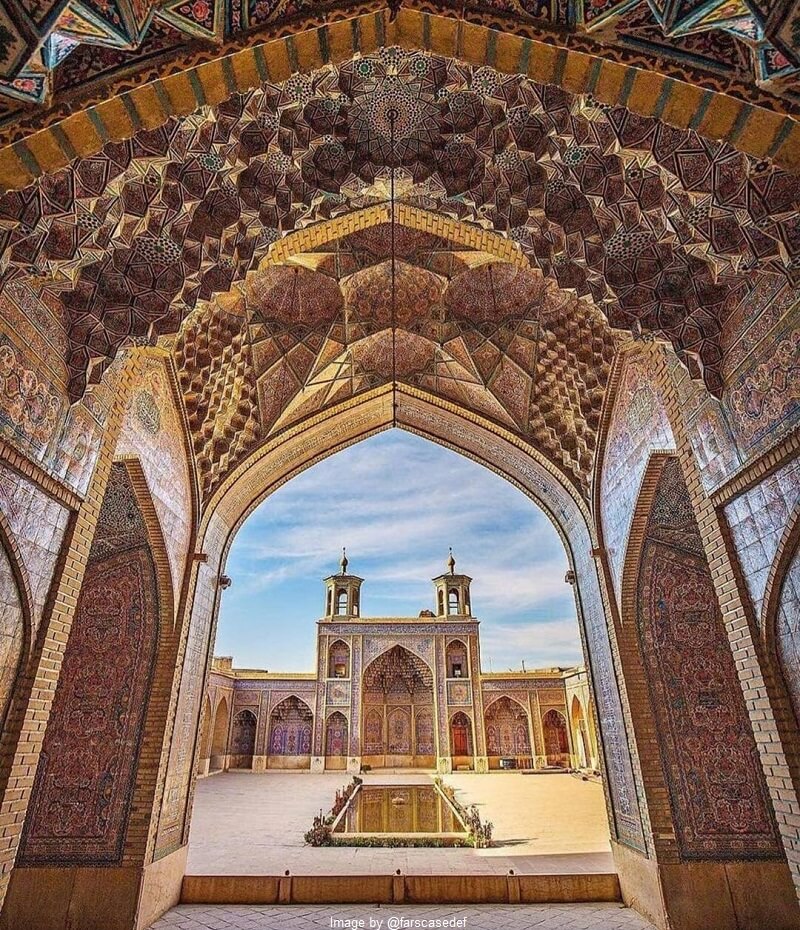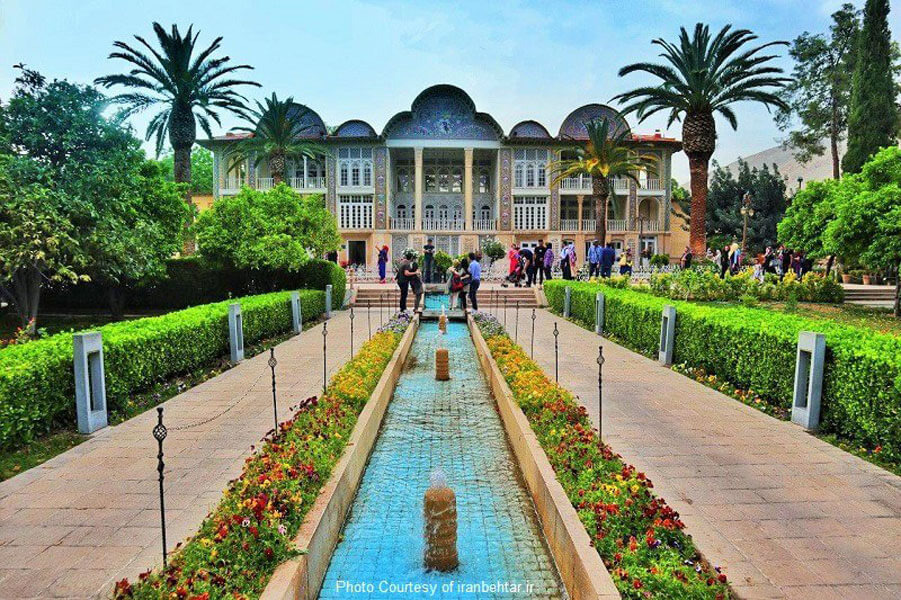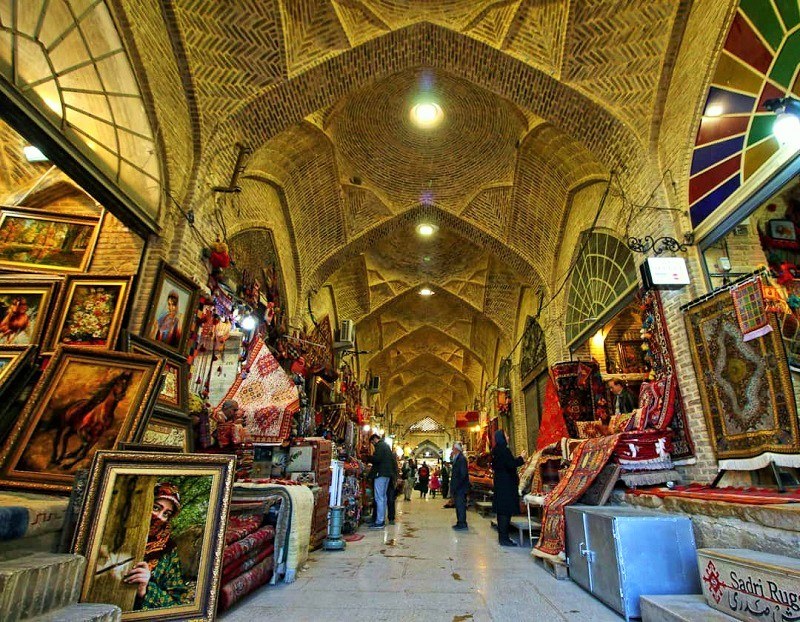
Shiraz is one of the big cities of Iran and the capital of Fars province. This beautiful city has several tourist attractions. Various attractions of this city, including historical, natural, religious, etc., have made it more famous. Among the historical attractions of this city, we can mention Vakil Bazaar of Shiraz.
Vakil Bazaar, named after Vakil al-Ro’aya (the title of Karmi Khan, the founder of Zand dynasty), is known for its colorful shops and architecture. This bazaar was built by Karim Khan for the purpose of buying and selling, trading, and even trusting. Karim Khan-e Zand had chosen Shiraz as his capital. For this reason, a lot of buildings were built in Shiraz, such as the Vakil complex, which includes a market, a mosque, and a bath.
Vakil Bazaar of Shiraz is located in the center of this city, east of Shahradari Square. The construction of this market dates back to the middle of the 18th century, which lasted for 21 years. Jahorm bazaar is known as the twin sister of the Vakil bazaar.
Architectural Style and Different Parts of Vakil Bazaar
Materials such as plaster, brick, and lime have been used to build Vakil Bazaar. The walls of this building are located on foundations of carved stone slabs. The roof of the bazaar has an element called Chahar-Sou (literally translated as four directions), which is the intersection of the four main passageways with the side corridors.
The ceiling of the Vakil bazaar has 74 arched sections with a height of more than 11 meters. Vakil Bazaar in Shiraz is higher than all other similar structures in the country. Of course, today, due to the flooring embankment, the height of its arch has been reduced by one meter.
In addition, this market has 5 big gates; in other words, 5 entrances. Also, the market has three spaces, each one allocated to a specific purpose. They are:
- Passage: is where customers cross.
- Shop area: This place is two steps higher than the ground level. The reason why it is higher than the ground level is to protect the items inside the shop from moisture.
- Shop space: This space is a place to sell goods.
The architecture of this building is taken from the Bazaar of Qaisariyeh in Lar. Also, this bazaar was built similarly to Isfahan’s Bazarche Boland, which was built by Shah Abbas, the Safavid king. It differs from other bazaars in its width. The Vakil market is wider than other bazzars.
In addition, this bazaar has two corridors that are connected in the shape of a cross. Its two corridors are North-South and East-West. At the place of their intersection, four souqs are built on a vestibule.
The corridors of the market branch off in four different directions. There are different sections on each side of this market, in each of which different guilds are working. Among the market segments, the following can be mentioned:
- Grand Bazaar, offering all kinds of goods
- Bazazan (mercers) market, offering textile and materials
- Tailors’ market
- Hatters market
- Saraji (traditional leather making) market
- Swordsmiths’ market
Different Lines of Vakil Bazaar of Shiraz
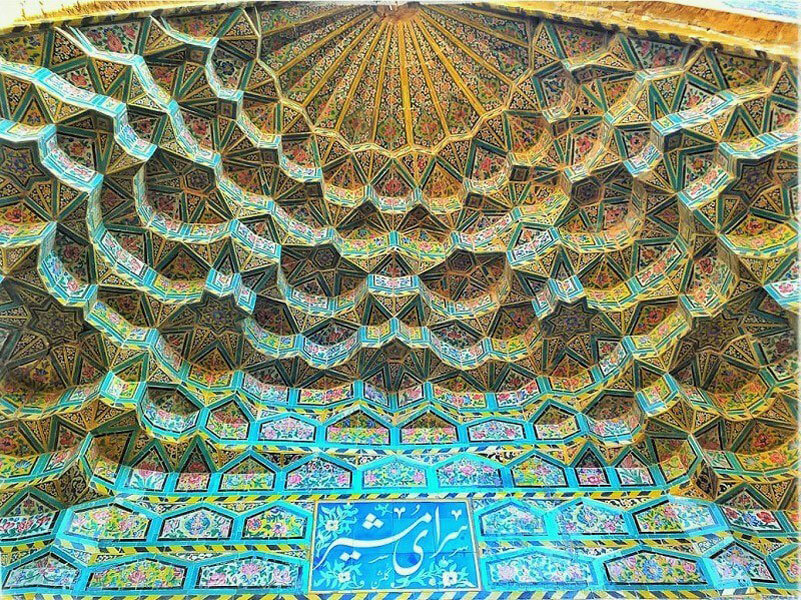
The northern passageway of the bazaar, or the north-south side, starts from Isfahan Gate and continues to Sara-ye Moshir. This passageway is one of the main sections of the bazaar, which has 41 pairs of shops and 48 arches. The shops of this passageway are located on both sides of it and face each other. Most of these shops have two floors.
In front of each of the shops, there is a platform made of large stone pieces, on which Toranj motifs are carved. Hats and cashmere used to be sewn in this passageway.
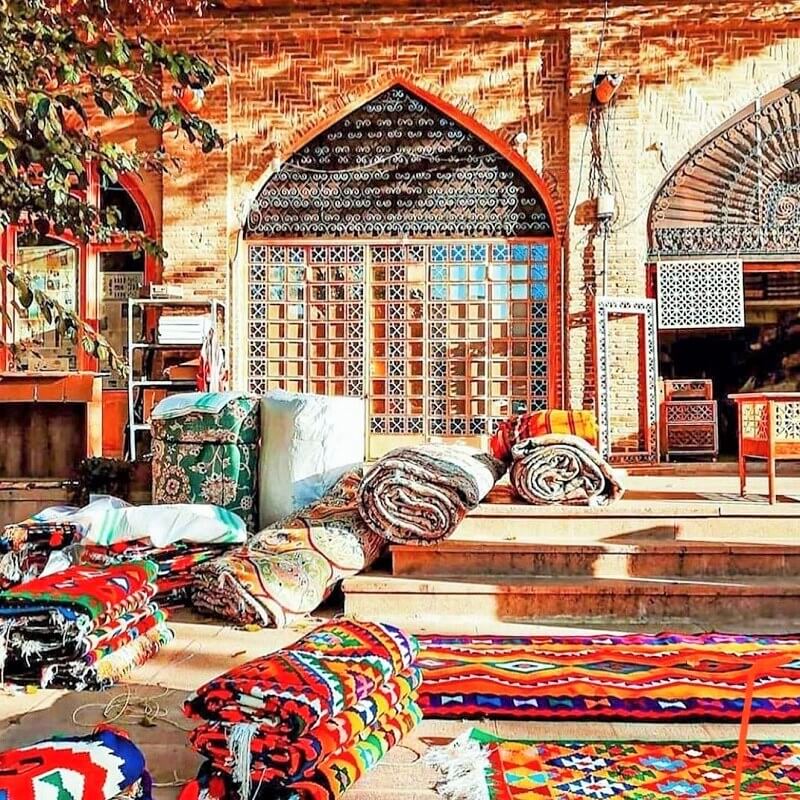
The other side of Shiraz’s Vakil Bazaar, whose entrance is from the entrance of Vakil Mosque, was known as the Shamshirgarha Bazaar in the past. There are 11 pairs of shops in this passageway. Also, the entrance door of Vakil Caravanserai is located in this direction. Today, this caravanserai is known as Sara-te Feel. In this passageway, Tarkesh-Duzan (quiver makers) and mercers work. Also, all kinds of handicrafts from Shiraz and Fars provinces are offered in this passageway.
The east-west line of the bazaar has two eastern (eastern) and western (western) parts. The eastern part has 4 souqs, which are also known as Alaqeh-bandan (craftsmen who make threads and bands). There are 19 pairs of shops in this passageway. Currently, the eastern part is the center of carpet sales and there are also some herb shops.
Also, the western part of the market has 4 souqs and 10 pairs of shops. This passageway is also a center for selling handwoven carpets.
There was a large marble basin under the four souq ceiling of this market. The water of this pond was supplied through the aqueduct that is located under the Tarkesh Doozan bazaar. The waterway has an arched ceiling and is made of bricks and mortar.
It should be noted that today, due to the raising of the floor of Vakil Shiraz Bazaar, the marble pool has been removed. Also, due to the expansion of Zand Street in 1936, a number of cells in this market were destroyed.
Do not Miss Visiting This Attraction
Vakil Bazaar of Shiraz is the economic heart of this city. This market, with its unparalleled beauty, welcomes many tourists from Iran and abroad. If you are planning to travel to Shiraz personally or order one of the Iran tours, do not miss visiting this historical building.
Destination Iran recommends visiting other tourist attractions of Shiraz in addition to this very attractive and traditional spot.



